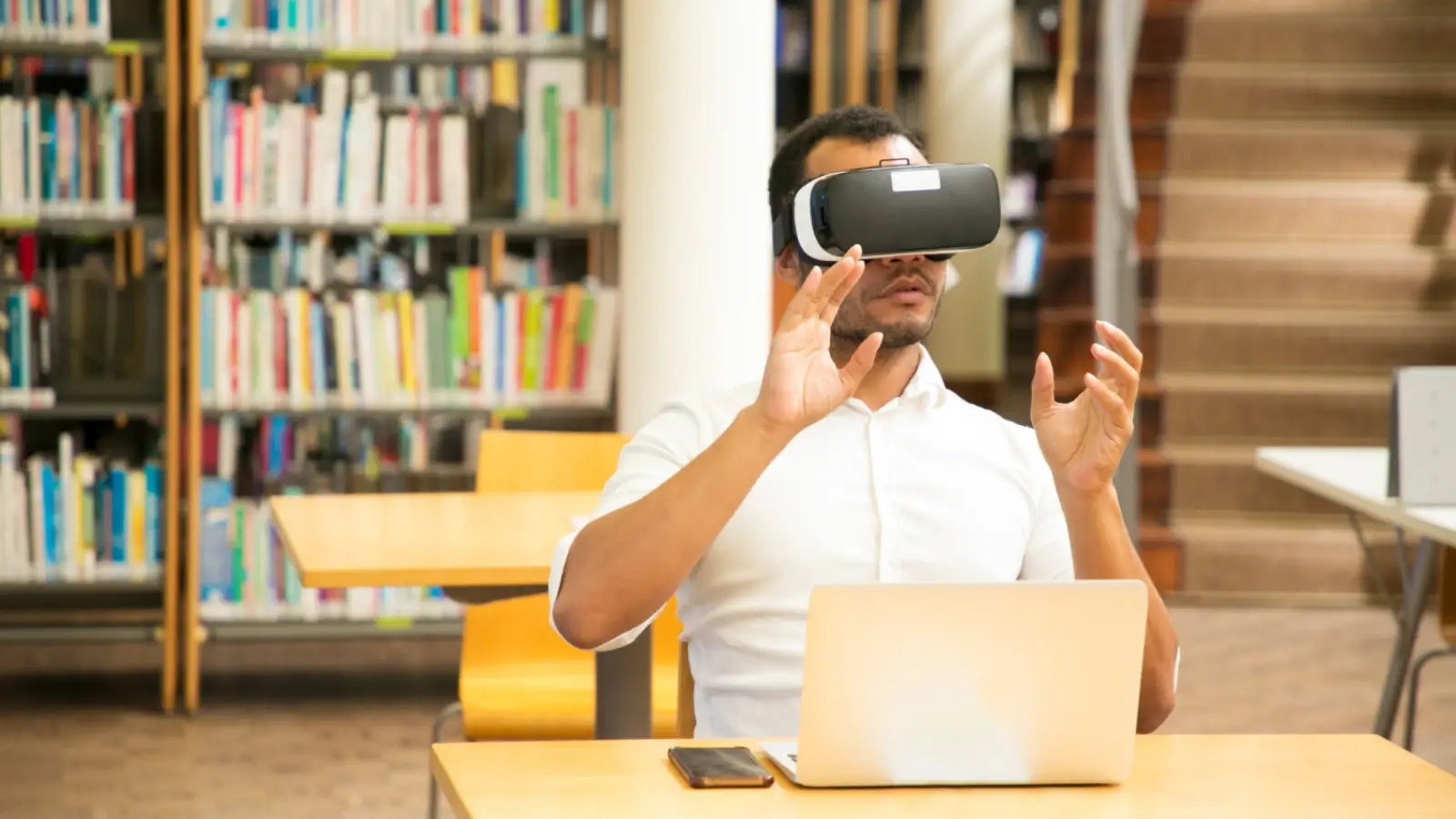


The world of computer vision libraries is changing fast. New AI image processing technologies are making machines better at understanding pictures and videos. This is happening in many fields.
Today's machine learning has made computer vision libraries much more powerful. Experts are working hard to create smarter systems. These systems can now spot and understand complex images with great accuracy.
Computer vision libraries are leading to big changes in many areas. They help in healthcare and in making self-driving cars. Thanks to deep learning, machines can do things we thought were impossible just a few years ago.
Big tech companies like Google, Microsoft, and OpenAI are leading the way in computer vision research. Their work is making image recognition technology even better. Now, machines can understand pictures almost as well as humans do.
As AI keeps getting smarter, computer vision library will be the key. They will help create systems that can see and act on the world in new ways.
The world of computer vision has changed a lot in the last ten years. What started as simple tools for analyzing images has grown into powerful neural networks. These networks can understand images in ways we never thought possible.
At first, computer vision libraries could only do basic things like change pixels and recognize simple patterns. Now, they use deep learning to spot complex patterns with great accuracy. Libraries like OpenCV, TensorFlow, and PyTorch are key to this progress. They help make new discoveries in many fields.
Neural networks have changed how machines see the world. They can now identify objects, sort images, and even understand small details. This has led to new chances in areas like medicine and self-driving cars.
The secret to this change is advanced machine learning. It keeps getting better at recognizing images. Thanks to these libraries, making complex vision systems is easier than ever before.
AI image recognition has changed how machines see the world. Deep learning models let computers understand complex images very well. They can spot objects, faces, and scenes with human-like accuracy.
Today's computer vision is incredibly precise. Neural networks, trained on huge datasets, find patterns that old methods miss. They can sort images into thousands of categories in just milliseconds.
Technologies like convolutional neural networks have made big strides in AI image recognition. Machine learning can now handle complex tasks in fields like medicine and self-driving cars. These advances cut down on mistakes and speed up image analysis.
The field of AI image recognition is growing fast. New deep learning models can grasp context, read emotions, and predict actions from images. As computers get stronger, we'll see even more advanced image recognition soon.
Many industries, from healthcare to retail, are using these advanced computer vision tools. They can quickly and accurately analyze images. This opens up new ways for automation, diagnosis, and smart decision-making.
Modern computer vision is changing fast thanks to deep learning frameworks. These systems use complex neural networks to analyze images with great accuracy. They can quickly understand detailed images in many areas.
GPU acceleration is key to making deep learning faster. Graphics processors help computer vision apps work quicker and handle complex models. This tech makes real-time image recognition possible in areas like medicine and self-driving cars.
Frameworks like TensorFlow and PyTorch make creating advanced computer vision easier. They offer tools for building custom neural networks. This makes it simple to test and use new vision algorithms.
The mix of deep learning and computer vision is leading to new tech. As machine learning gets better, we'll see even more ways to understand and analyze images.
Edge AI is changing how mobile devices see the world. It brings powerful processing right to your phone or tablet. This means they can do complex tasks without needing the cloud.
Now, smartphones and tablets can analyze images and recognize objects in real-time. They can even make smart decisions on their own. This is thanks to edge AI's on-device processing.
Mobile computer vision is growing fast in many fields. Car makers use it for safer driving, spotting objects and preventing crashes. Doctors can quickly and safely look at medical images on their devices, keeping patient data safe.
Even devices with limited resources can now do cool computer vision stuff. Thanks to smart machine learning, they use little power but still perform well. This lets developers make apps that instantly understand what they see, from AR to quality checks.
The future of edge computing in computer vision is bright. As mobile processors get stronger and AI gets smarter, we'll see even more cool uses. It will change how we use technology with visual intelligence.
Real-time computer vision is key in many fields. Developers work hard to make systems fast. They aim to analyze images quickly, which is vital for self-driving cars, robots, and security systems.
Reducing latency is a big challenge. New algorithms use smart methods to speed up processing. This lets machines make fast decisions in tough situations.
Performance metrics are important for checking computer vision systems. Scientists use tools to measure how fast and accurate they are. This helps improve these technologies over time.
New methods like parallel processing and GPU acceleration have changed how fast images are analyzed. Cloud and edge computing make these systems even faster. They can now handle complex tasks quickly and accurately.
Modern computer vision libraries have changed the game for cross-platform development. They offer flexible solutions for developers. These libraries make it easy to work across different operating systems and hardware.
Now, developer tools support comprehensive cross-platform development environments. This makes complex vision applications easier to handle. OpenCV and TensorFlow are examples of platforms that work well on Windows, macOS, Linux, and mobile systems.
These tools allow developers to write code once and use it many times. This saves a lot of time and effort.
Computer vision APIs now have modular designs for quick prototyping and scalable apps. Developers can use pre-built components and machine learning models to speed up projects. These tools make coding simpler while keeping performance high.
Cloud-based development platforms also boost cross-platform capabilities. They offer standardized interfaces for computer vision projects. This means developers can build advanced vision apps quickly, with less need for platform-specific settings.
The future of computer vision development is about creating solutions that work everywhere. As tools keep improving, developers will have more freedom to build smart vision applications.
Developers have to decide between open source libraries and commercial vision software. Open source libraries like OpenCV are flexible and cost-effective. They offer tools for image processing and machine learning without a big financial burden.
Commercial vision software has its own benefits for complex projects. It comes with dedicated support and advanced features. Companies like Google and Microsoft offer powerful platforms for large-scale projects.
The choice between open source and proprietary solutions depends on the project's needs. Small startups might choose open source to save money. Large companies might prefer commercial software for its support and security.
When deciding, consider factors like development speed, scalability, and community support. Open source libraries have global communities and continuous updates. Proprietary solutions offer specialized tools and dedicated support.
Medical image analysis has changed how we diagnose diseases. Now, AI helps doctors quickly and accurately spot serious health issues. It uses computer vision to analyze X-rays, MRIs, and CT scans faster than humans.
Computer vision is changing patient care in many ways. It helps radiologists find small problems in images that humans might miss. It also finds tumors early, helping doctors treat them sooner.
AI is making surgery planning better too. It uses 3D images to help doctors plan surgeries. This gives doctors a better view of what they're doing, leading to better care for patients.
Research is making AI in medicine even better. New AI systems can predict how diseases will progress and suggest treatments. They're becoming key in making medical decisions, combining technology with medical knowledge.
Industrial computer vision has changed how we make things. It brings advanced automated inspection tools to the table. These tools help spot defects quickly and accurately.
Manufacturing AI makes old quality control methods look outdated. It analyzes complex visual data as it happens. This means products can be checked for quality in real-time.
Robots now use computer vision to move around in complex spaces. They can spot tiny differences in products, keeping quality high. This cuts down on mistakes and boosts efficiency.
Today, computer vision is used at every stage of making things. From checking stock to verifying finished products, AI helps keep quality high. It lets manufacturers track and improve their processes with great detail.
Machine learning has made manufacturing AI even better. Now, computer vision can predict when machines might break down. It can also find small defects in materials and make production smoother. These advancements are a big step forward in making things better and more efficient.
As computer vision gets smarter, making things better, cheaper, and faster becomes easier. The future of making things is all about using smart, data-driven tools to check quality.
Modern security AI has changed how we protect people and things. Facial recognition systems can now track and identify people in complex places.
Advanced security tech uses computer vision to analyze video feeds in real-time. These smart systems spot unusual behaviors and alert security teams fast. Facial recognition is key for law enforcement and private security.
New video surveillance solutions do more than just watch. They use machine learning to spot normal versus suspicious actions. Security AI can watch many people at once, making responses faster and more accurate.
AI in surveillance is making public safety better. Places like airports and stadiums use advanced facial recognition. This helps stop crimes by being proactive.
But, these techs also bring up privacy concerns. It's a big challenge to keep security high while protecting privacy. Developers and policymakers must find a balance with these advanced surveillance tools.
Computer vision is changing many industries fast. But, it also brings big data privacy issues. It's important to look closely at how visual data is collected, processed, and stored. We need to protect privacy while making technology better.
New rules for computer vision are being made. Governments are setting up guidelines. These rules want data collection to be open and clear, and they need consent. They aim to stop unwanted watching and protect personal info.
New ways to keep data safe are being tried. Things like federated learning and differential privacy help. These methods let models learn from data without sharing personal info. This way, we can make computer vision better while keeping privacy safe.
Experts say we should check how computer vision affects privacy before using it. Companies need to have clear rules for handling data. They should also keep users informed about how their data is used.
Building trust is key for computer vision's future. We must tackle privacy issues and follow strict ethics. This way, we can make sure these technologies help us all while respecting our rights.
The world of computer vision is changing fast, thanks to AI and new tech. These changes are making big impacts in fields like healthcare and industry. They're helping us understand and analyze images in new ways.
As computer vision keeps getting better, we all need to stay open to new ideas. By combining smart machine learning with strong computing, we can do more with images. This makes visual tasks smarter and more efficient in many areas.
New tech is making advanced computer vision tools easier to use for everyone. Whether you're a small business or a big company, you can now use advanced image recognition. This opens up new chances for creativity and solving problems.
The story of computer vision is still being written. With AI getting better, we'll see even more amazing tools for understanding images. These advancements will keep pushing the limits of what we can do with visual data, leading to big changes in many areas.